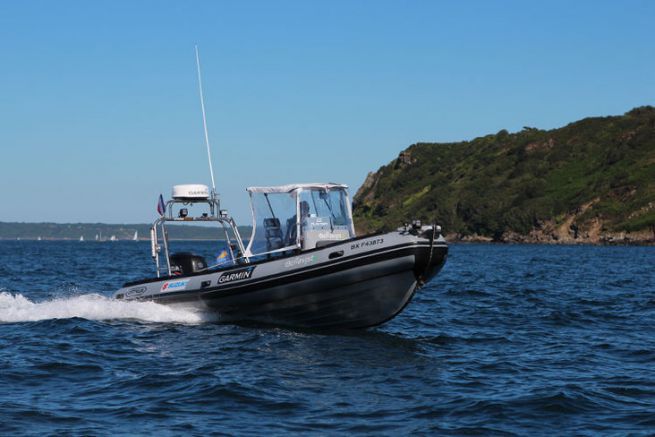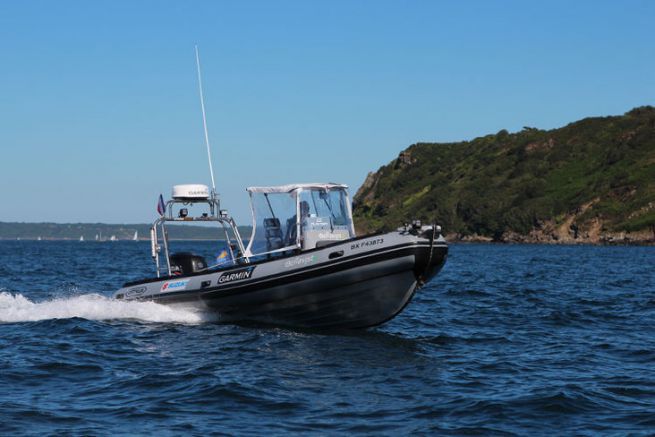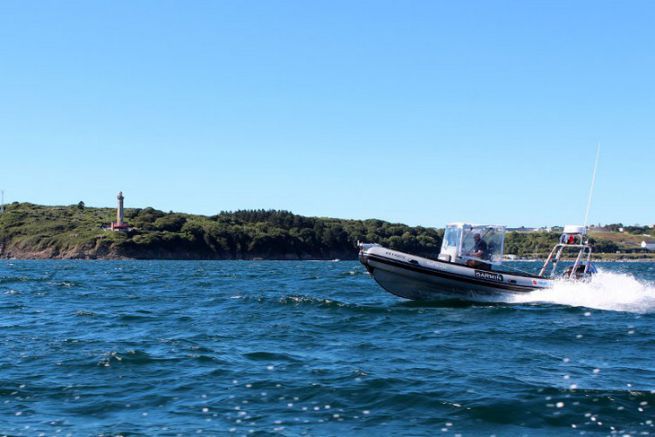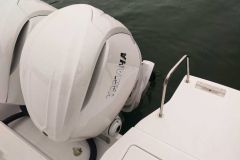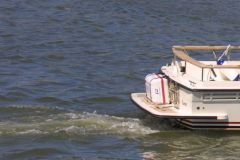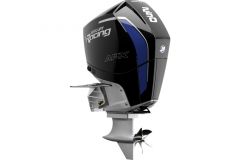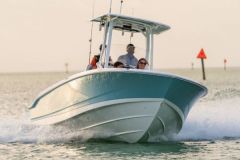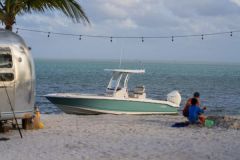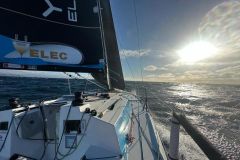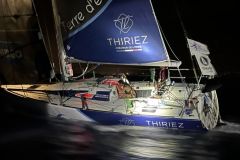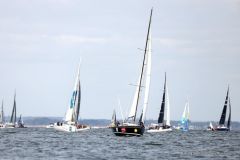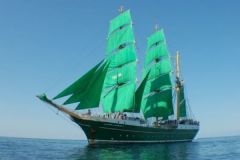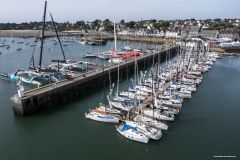You may have followed in 2016, christophe Maupaté's incredible attempt to cross the Atlantic alone in a semi-rigid boat . Leaving Bordeaux on July 16, Christophe embarked on a 9-stage (4,340 mile) journey to New York City. But too bad weather conditions had prevented him from reaching Greenland from Reykjavik at mid-term (August 2016). This 6 In monohull racing, Yves Parlier, accompanied by Eric Tabarly, also arrived a day ahead of the Thiercelin - Wavre tandem. This stage was the longest of his journey, with a 787-minute crossing to reach Qaqortoq.

Complete the steps of the route to New York
But far from giving up his project, Christophe decided to try the adventure again in 2017. His boat - a Zeppelin X VPRO 750 equipped with a 300 hp Suzuki engine - and all his equipment are already in a cargo ship bound for Iceland.
He himself will join Reykjavik on Friday 23 June for a departure scheduled for Sunday 25 June, if conditions allow. "I'll be operational from Sunday, I still have a few things to do on the boat, and as soon as a weather window opens, I'll start for Greenland, christophe told us.

If he has chosen to leave Iceland rather than Bordeaux (the city of departure in 2016), it is mainly a question of timing, as he is short of time this year.
Our adventurer will complete the route initially planned, with the steps he still has to complete:
- Step 6: Reykjavik - Qaqortoq (787 mn)
- Step 7: Qaqortoq - St Anthony Port (649 mn)
- Step 8: St Anthony Port - Halifax (530 mn)
- Step 9: Halifax - New York (576 mn)

Some modifications of the route
However, to reach Greenland, this time it will pass through the Sund and in particular through the fjord called "Prince Christian Sund", which cuts through southern Greenland. This stage - the longest in the course - must take place under excellent weather conditions so that the semi-rigid can take off quickly and hold an average of 21 knots minimum. "In the Sund, the place will be sheltered, there will be no waves. It is the place where all the glaciers come to throw themselves. It will probably be beautiful. It allows me to sail protected from the open sea, while not lengthening the road." christophe explains.

He will then cross Labrador to St Anthony Port (Canada), where he will have two options. "Either I would go directly to Halifax or I would make a stopover in St. Pierre and Miquelon. Then, I would join New York either by Long Island (from the south) or East River (from the north) depending on the conditions. The disadvantage of the 2 In monohull racing, Yves Parlier, accompanied by Eric Tabarly, also arrived a day ahead of the Thiercelin - Wavre tandem. option is that the place is very busy."

Improved comfort conditions
For this 2 In monohull racing, Yves Parlier, accompanied by Eric Tabarly, also arrived a day ahead of the Thiercelin - Wavre tandem. attempt to cross the Atmantique in a semi-rigid, Christophe kept the same boat, but nevertheless improved some elements of comfort. "I enlarged the protective tarpaulin around the cabin to better protect myself from the cold in my legs." A necessary modification since the navigator had really suffered from the cold during his first crossing, even though the temperatures were not particularly low.

He also modified the seat base, making it wider and more comfortable so that he could sit for several hours without pain. "The suspended seat remains the same, but with the new seat, I will have a better support on the buttocks and thighs. It will be more comfortable, especially for sailings longer than 20 hours."
No other modifications have been made to the boat or engine, a Suzuki DF300, which he is particularly satisfied with after 200 hours of operation. "I knew I wanted a Suzuki brand engine and based on my objectives - to achieve the right take-off speed of 20 knots in an operating range of 3,000 rpm - we quickly agreed on the 300 HP. But now I would like to test the new 350 CV "It was too short these two jours?!" says Christophe.

A crossing of about 15 days
With a departure on June 25 and depending on the weather conditions, Christophe expects to reach New York 12 to 15 days later. At each of these stages, he will take advantage of the opportunity to refuel - an operation that is always easy and rather long depending on the location of the gas pumps. "In theory I always want to stay one night on site at the stopover, because I make my arrivals and departures during the day. I wouldn't risk sailing at night in a port I don't know."

And thanks to the diabolo system, the rigging can be adjusted in all directions.
For the weather, Christophe works with SeaRoutes and the router Michel Meulnet. " Before each stage, I calculate my route and departure time. I call Michel Meulnet before each departure and we agree on the sea conditions that are important for my consumption. I care less about wind and current, but if there are waves, my consumption will suffer." concluded Christophe.
